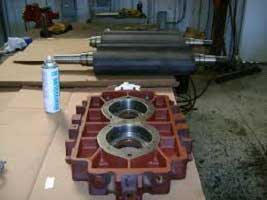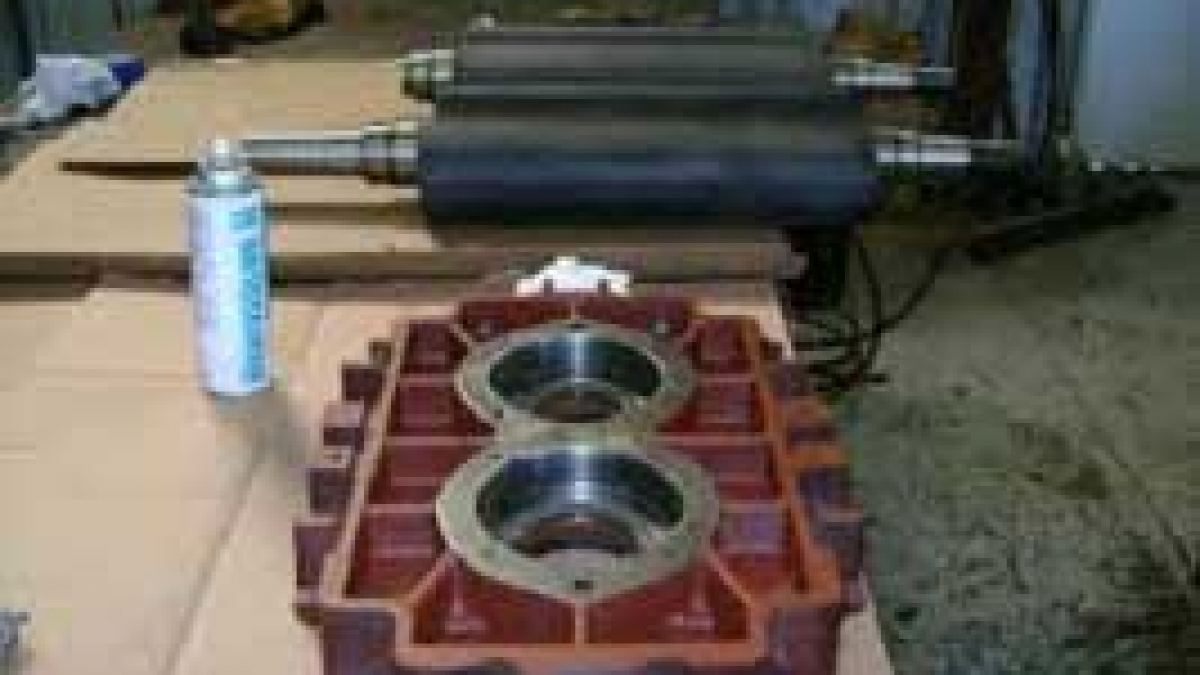How do you make a vacuum cleaner reactor?

The Swedish Nuclear Safety Authority has threatened to withdraw the operating license for the plant, the largest in the Nordic region, over what it says are two and a half years worth of safety warnings and special supervision from the safety authority that have gone ignored or unimplemented by plant management.
The fire represents the second since 2006 at the Ringhals plant.
A fire late last month at Oskarshamn, another Swedish nuclear power plant, had already cast a pall over Sweden’s safety record in the post-Fukushima world, and has put environmentalists on edge.
The May fire broke out in Ringhals’ reactor No 2. Ringhals is on Sweden’s west coast near the city of Gothenburg and is the largest nuclear power plant in the Nordic region.
Investigators said over the weekend that the fire at the reactor had been caused by a wet vacuum cleaner mistakenly left behind.
“Those items aren’t supposed to be left in the containment, when testing,” said Peter Gango of Vattenfall, the utility that runs the plant, in remarks to SVT Swedish television.
“It was a human error, and those shouldn’t occur in our power plants.”
Bellona’s executive director and nuclear physicist Nils Bøhmer also pointed out that a nuclear facilities are only safe so long as workers don’t make “stupid” mistakes.
“This incident once again shows the importance of the human factors in any nuclear installation,” said Bøhmer.
“You can build in a lot of safety equipment to prevent an accident, but the workers at that plant are only humans and will make stupid mistakes.”
At present, all of Ringhals’ four reactors are not operating, according to SVT. The power plant’s management hopes to get two of the reactors started next week, the television report said. The Ringhals facility supplies about one sixth of Sweden’s electricity.
Sweden’s the Local reported the fire-damaged reactor was scheduled to come back online in December after repairs had been completed.
Nuclear safety authorities weigh closure option
But Leif Karlsson, who heads the Swedish Nuclear Safety Authority’s radiation protection seemed to hint that restarting the reactors at Ringhals may be premature.
Karlsson would not say how close a closure of the plant may be, but he told SVT that “there is obviously a discussion that needs to take place if safety measures at Ringhals do not have the desired effect.”
“There may come a situation where we simply say we do not trust Ringhals to run the Business,” said Karlsson, adding, “and they do not” – a clear nod to Vatenfall.
Closing Ringhals would come as a sensational swoop from regulators in Sweden where it was decided just last that the country would abandon plans to phase out nuclear power. Sweden operates 10 nuclear reactors at three plants.
If Ringhals is not closed, reported SVT, it could fall under at least three years of supervision and mandated reorganization from the Swedish Nuclear Safety Authority – a record length in Sweden for such a governmental supervisory role.
The safety authority’s Eriksson said closure of the plant would be weighed on the basis of whether closing Ringhals was the correct approach, or whether more heavy-handed guidance of the plant would be successful.
Second fire in five years
The May fire was the second fire to occur at Ringhals in 5 years. In November 2006, a late night fire started at a transformer at reactor No 3 at the plant.
Reactor No. 3 unit is a pressurized water reactor that started commercial operations in 1981, according to the Ringhals plant’s Web site.
The fire – is as typical for such reactors – triggered an automatic shutdown and there was no danger to the reactor. There was no danger to the reactor, Vattenfall authorities said at the time.
Other recent nuclear mishaps in Sweden
The October fire at Oskarshamn was caused according to its operator OKG by oil that leaked onto a hot surface. The fire occurred in the turbine hall of the plant’s reactor No 2 and was quickly put out by the plant’s own emergency services, after which the reactor and the turbine were closed down as a precautionary measure.
The fire touched off fears in Northwest Russia of a possible spread of radiation, where specialists were quick announce on Sunday that background radiation levels in the Leningrad Region and in the city of St. Petersburg remained normal.
Other incidents have plagued the Swedish nuclear industry, often extolled for its safety, since 2006. In that year, a serious fire at Sweden’s Forsmark nuclear power plant threatened the integrity of a reactor.
In October 2008, fractures were found in the control rods of Oskarshamn’s reactor No 3, which led to a long maintenance blackout. Swedish Radiation Safety Authority called at the time for immediate inspections at Swedish plants sharing similar control rod designs. Inspections at Forsmark 3 revealed similar problems to those at Oskarshamn.
Earlier that same year, Oskarshamn became the centre of a security scandal when it was found that two subcontracted maintenance workers had gotten past checkpoints with a bag containing residue from explosives.
The two workers were released the next day, but suspicions about where the explosive residue had come from remains.
The incident provoked outrage from German Member of European Parliament Rebecca Harms who deplored the incident as showing up lax security at nuclear power plants.
[/av_textblock] [av_textblock size=” font_color=” color=”]
Leave a Comment